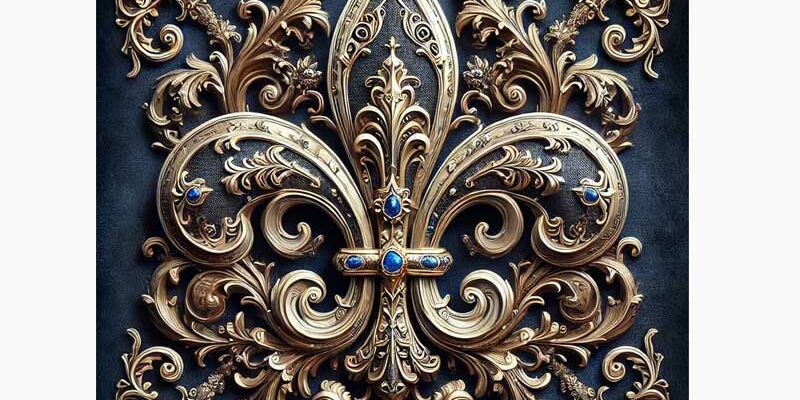In New Orleans, you see the fleur-de-lis used as decoration everywhere: cars, clothes, mailboxes, even The Saint’s helmets. But what does it mean? Why is it used? Where did it come from?
Brief History Lesson of the Fleur-de-Lis
Obviously, the word has a French connection, the translation of which meaning lily flower. The fleurs-de-lis came to America via different European settlers during the colonial era, usually suggesting a previous settlement of French pioneers throughout a certain town or region. One legend behind the appearance of the symbol states the French monarchy first employed the fleur-de-lis for their royal coat of arms as a symbol of purity after the conversion of the Frankish King Clovis I to the Christian Religion in 493 AD. Another variation of this claims that at Clovis’ baptism, a lily was given as a blessing from an apparition of the Blessed Virgin Mary, who is often associated with the flower herself. From many variations of stories such as these, the three petals have thus been used to represent the Holy Trinity.
A Decoration of Faith
In the 12th century, King Louis VI and King Louis VII started to use the emblem on scepters and jewelry, connecting their rulership to a symbol of saintliness, and during the reign of King Louis IX, the three petals of the flower were meant to represent faith, wisdom, and chivalry, and to be a sign of divine favor bestowed on France.
The French national Coat of Arms would eventually become France Modern, a blue background featuring 3 gold fleurs-de-lis, as well as the nation flag white with many small gold fleurs-de-lis until the French Revolution of 1789. This was replaced by the red, white, and blue flag they still fly today. After the end of the French Second Empire in 1870, Henri, Comte de Chambord was offered the throne as King of France, yet refused unless France gave up this tricolor flag and brought back the previous white and gold flag. This condition was rejected and France became a republic.
Fleur-de-Lis: An Emblem of New Orleans
This very old insignia was, and still is featured on many different international flags and crests, such as Quebec and Nova Scotia. Here in Louisiana, it is featured on the flags of Lafayette, Baton Rouge, and of course New Orleans.
In New Orleans this symbol has recently had a redefined meaning; artisans all over the city add it to their crafts and projects as a recognizable signature of the city, and many citizens even bear tattoos of the symbol, viewing it more now as a sort of symbol of rebuilding, and a comfortably familiar icon of home.
Where are some of the best Fleur-de-Lis incons in New Orleans?
I would argue all over the superdome and the helmut of the beloved New Orleans Saints! But you can see them everywhere in the city. The biggest Fleur-de-Lis are on the Superdome, but you also see them in signs, murlas, and paiting all over the city. The city’s iconic black street signs often include a small fleur-de-lis. While not huge, they are extremely visible and photographable. They reflect the French colonial influence. Many poles, signs, and even the tops of the streetcars include cast fleur-de-lis shapes—especially near major stops.
Looking for Other Fun things to do in New Orleans?
Check out our article on our favorite music venues in New Orleans. Yes you will see a fleur-de-Lis at most of these locations.

